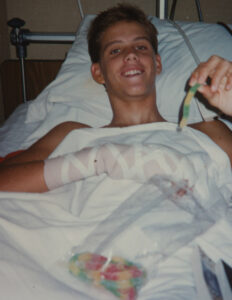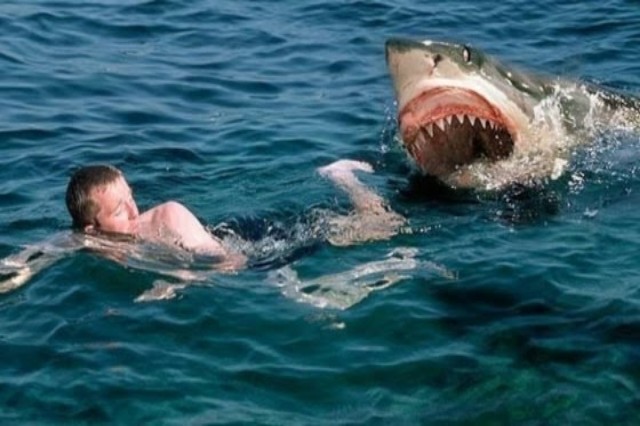Mike Coots, a resident of Kauai, was surfing with friends when a shark attacked him. Despite the terrifying incident, he survived and gained valuable insight from the experience.
While shark attacks are often a topic of fascination for people, the reality is that the chances of being attacked by a shark are quite low, with odds of one in 11.5 million. This is roughly equivalent to the likelihood of winning an Oscar, and slightly less than the chance of being elected president. Despite the rarity of shark attacks, Mike Coots had the misfortune of being attacked and losing a leg to a shark bite at the age of 18. However, he also considers himself fortunate to have survived the ordeal and gained valuable knowledge from it.

In late October of 1997, while enjoying a typical fall morning with friends on the island of Kauai, Mike Coots was attacked by a tiger shark near his home. Despite the great waves, a large shark suddenly appeared under Mike and bit down hard on his lower leg without warning. There was no splashing or noise, and the shark had no dorsal fin. All Mike felt was immense pressure on his lower body, with no pain.
Desperate to free himself from the shark’s grip, Mike attempted to pry himself loose, but the shark only bit down harder and shook him around like a toy. Mike decided to fight back and followed his instincts, repeatedly punching the shark in the face until it eventually let go.
As he swam back to shore, he felt his lower right leg spasming, and upon looking down, he realized it was gone. The shark had bitten off his lower leg. Thankfully, his friends quickly came to his aid, with one of them fashioning a tourniquet out of the leash from his board to stop the bleeding. The doctors later explained that this tourniquet may have saved his life during the drive to the hospital.

After his attack, Mike spent several weeks in the hospital before he was discharged as a below-the-knee amputee. During this time, he spent time with his family, researched prosthetics, and contemplated his future. Once he was cleared by his doctors, Mike did something that many people would find unthinkable: he went back to surfing.
His first time back in the water was even near the same spot where he was attacked. Despite the traumatic experience, Mike remained undeterred and instead became curious about the reasons behind the attack. He wondered if it was related to the tides or the phase of the moon, and even recalled that the water had a fishy smell on the morning of the attack, which may have attracted the shark.

After his attack, Mike’s curiosity about sharks led him to do research. Although he never found out why he was attacked, he discovered something that changed his perspective. Mike learned that humans are a greater threat to sharks than they are to us. He was shocked to learn that 70 million sharks a year are killed for their fins alone to meet the demand for shark fin soup.
As a shark attack survivor, Mike felt compelled to advocate for these misunderstood creatures. He worked with the Hawaii state legislature to ban shark-derived products and teamed up with other shark attack survivors and marine biologists to urge senators in Washington to create a national bill protecting sharks. Mike even spoke at the United Nations about the importance of establishing shark sanctuaries.
Following the attack, Mike found a new passion in photography, which has since become his profession. He uses his skills to spread awareness about the importance of sharks and the threats they face. According to Mike, “Sharks have survived mass extinction when everything else on earth was wiped away. They’re here on earth for a very important reason, holding together the web of biodiversity, and without them, our seas cannot survive.”
